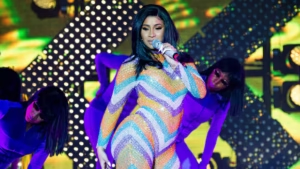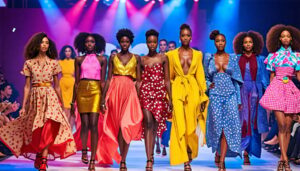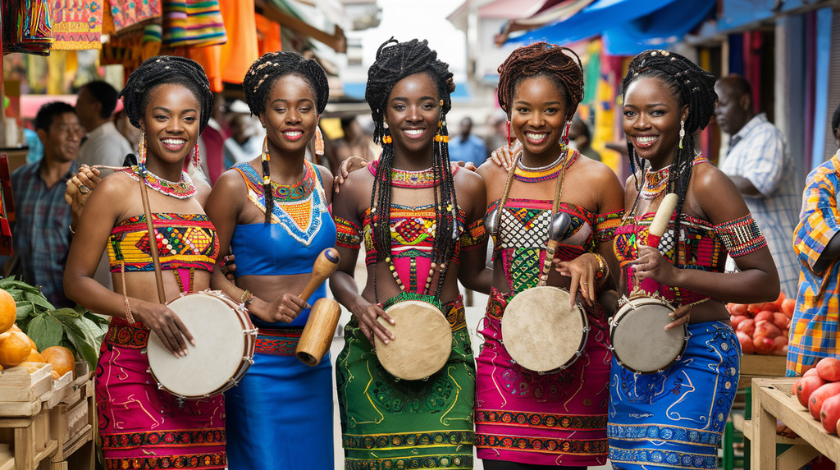Introduction to the unusual award n.13
Welcome to the intriguing world of unusual awards, where creativity and culture collide in unexpected ways. Today, we’re shining a spotlight on unusual award n.13: extreme gluteal proportions in african woman. This unique recognition goes beyond mere aesthetics; it delves into rich histories, cultural significance, and even scientific insights that shape our understanding of beauty. As we explore this fascinating topic, prepare to challenge preconceived notions and embrace the diverse body types that grace our planet. Join us as we celebrate an aspect of beauty that’s often overlooked yet profoundly impactful!
The history behind extreme gluteal proportions in African women
The fascination with extreme gluteal proportions in African women can be traced back centuries. In many tribal cultures, larger buttocks were seen as a symbol of fertility and health. Women often showcased their figures through traditional dances, celebrating the beauty of their bodies.
Ancient art and sculptures from various regions depict voluptuous forms, reinforcing the idea that curvy silhouettes are deeply rooted in African identity. These portrayals highlight how body shape has long been intertwined with cultural narratives.
In some communities, a fuller figure is synonymous with wealth and prosperity. Larger glutes were admired not only for aesthetics but also as indicators of social status. This historical reverence contrasts sharply with modern perceptions shaped by globalization.
As society evolves, these traditions continue to inspire pride among many women today. The appreciation for diverse body types remains an integral part of Africa’s rich cultural tapestry.
Cultural significance and perceptions of large buttocks in African societies
In many African societies, large buttocks are more than just a physical trait; they symbolize beauty and fertility. This admiration dates back centuries, woven into the fabric of cultural narratives.
Women with pronounced gluteal proportions often hold elevated status in their communities. They are celebrated during traditional ceremonies and praised in art and folklore. These attributes reflect health and vitality, key components for nurturing future generations.
Social norms further reinforce these ideals through media portrayals that showcase curvaceous figures as aspirational. Beyond aesthetics, they serve as a powerful expression of identity and self-acceptance among women.
Communities continue to embrace this body type, challenging Western standards that often favor slimness over curves. The appreciation extends beyond mere attraction; it signifies strength, resilience, and the celebration of diverse femininity across cultures.

The science behind gluteal proportions and genetics
Gluteal proportions are influenced by a fascinating interplay of genetics and environmental factors. Research suggests that specific genes can dictate fat distribution in the body, particularly around the hips and buttocks. This biological predisposition contributes to what we often perceive as “ideal” body shapes.
African women, for instance, may exhibit extreme gluteal proportions due to these genetic traits. Such physical attributes often arise from generations of adaptation to various cultural ideals and lifestyles.
Hormonal influences also play a role. Estrogen levels significantly affect where fat is stored, enhancing curves in certain areas.
Moreover, evolutionary biology offers insights into why larger buttocks might be favored; they can signal fertility and overall health.
Understanding this scientific backdrop allows us to appreciate the diversity of human bodies while challenging narrow definitions of beauty shaped by societal norms.
Controversy surrounding Western beauty standards and body shaming
The controversy surrounding Western beauty standards is a topic that ignites strong emotions. For decades, media portrayals have glorified slim figures while often dismissing or stigmatizing curvier body types.
This narrow definition of beauty can perpetuate harmful stereotypes. Many women feel pressured to conform to an ideal that doesn’t reflect their true selves. This leads to issues like body shaming and self-esteem struggles.
In contrast, cultures around the world celebrate diverse shapes, including fuller figures. In some African societies, larger buttocks signify fertility and health—qualities deeply valued in those communities.
Yet, the clash between these beliefs and Western ideals creates confusion. It raises questions about acceptance and appreciation of all bodies regardless of societal norms.
These discussions are vital for fostering understanding among different cultures. They encourage a shift towards embracing individuality instead of succumbing to unrealistic expectations placed by society.
Celebrating diverse body types and breaking stereotypes
Diversity in body types is a beautiful reality that deserves recognition. Each shape tells its own story and reflects a unique heritage.
Celebrating differences encourages us to appreciate the beauty found in individuality. It shifts the focus from narrow ideals of attractiveness to a broader understanding of human form.
Breaking stereotypes allows for empowerment, especially among women who have often felt pressured to conform. By embracing diverse bodies, we challenge societal norms that dictate what is considered appealing.
Every curve, every line contributes to the rich tapestry of humanity. This celebration fosters acceptance and confidence across all communities.
When we uplift various forms and sizes, we create an environment where everyone feels valued and respected. Embracing these variations enriches culture and inspires creativity in art, fashion, and lifestyle choices.

Conclusion: Embracing and respecting all body shapes and sizes
Embracing the beauty of diverse body shapes and sizes is essential in fostering a more inclusive society. The unusual award n.13: extreme gluteal proportions in African women highlights how perceptions of beauty vary across cultures.
Large buttocks have long been celebrated as symbols of fertility, strength, and femininity in many African societies. This recognition enriches our understanding of body positivity and challenges Western ideals that often promote narrow standards.
By appreciating these unique physical attributes, we can break free from stereotypes that limit personal expression. It’s crucial to celebrate every individual’s uniqueness without judgment or comparison.
Respecting all body types encourages self-love and acceptance among individuals worldwide. Whether it’s through awards like this one or simple acts of appreciation for diversity, acknowledging different forms invites everyone into a conversation about what it means to be beautiful.
The journey towards embracing all forms starts with us—by recognizing the value inherent in varied bodies and celebrating the rich tapestry they create within our global community.





